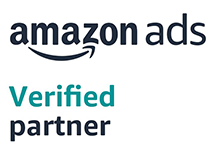Online shopping, today, is the most sought-after form of shopping given the choice, flexibility, and convenience it brings to the customers. One of the most enticing features it offers is the ease of replacing or returning orders in case not satisfied with the product. However, if not managed correctly, this feature can end up harming your business.
Studies show that every 1 in 3 orders is returned to the origin, hurting the profitability and sustainability of your business.
WHAT DRIVES THE HIGH RETURN RATE OF E-COMMERCE ORDERS?
The high rate of RTOs in e-commerce especially in DTC businesses is a significant problem.
Return trends for online orders in India between 2019 and 2020
Consumer behavior is one of the critical reasons behind high RTOs. Studies show that more often than not consumers buy with the motive to return. For instance, in the apparel sector, consumers tend to order a number of products with varying sizes to choose the best fit and return others.
Another major issue is the non-deliverability of the orders. This arises when the customer is not available at the given address or you have the incorrect delivery address. Failed attempts at delivery add to your costs in a seemingly invisible yet significant manner.
HOW TO MANAGE RTOS WELL?
E-COMMERCE RETURN ORDERS ARE HURTING YOUR BUSINESS IN MORE WAYS THAN YOU CAN IMAGINE. HERE’S WHAT YOU CAN DO BEST TO MANAGE THE SITUATION!
Return orders are inevitable, but they can be reduced to ensure minimum losses. The key is to understand the reasons behind these returns. Some of the practices your business must invest in to manage the situation are-
-
COMPLETE PRODUCT SPECIFICATIONS
Providing complete product descriptions and real pictures from different angles can help make consumers more informed choices and not indulge in bulk buying with the motive of returning.
Along with product specifications, try to promote photo reviews from actual consumers as it helps build trust.
-
CREDIBLE CHECKOUT PROCESS
Payments both online and offline are a crucial part of how a customer perceives a store. For online shopping, a safe payment experience is the ultimate dealbreaker. Your e-commerce business process and payment must execute smoothly to guarantee a hassle-free checkout experience for your customer and reduce returns on your eCommerce brand.
-
PROPER PACKAGING AND EFFICIENT TRACKING
If a number of your RTOs are due to damaged products or unsatisfied customers, it may be a good time to review your delivery packaging. Try to ensure tamper-proof packaging, especially in case you are dealing with fragile and perishable items. You'd be surprised to see the power this simple step entails in bringing down returns caused due to packaging.
Tracking the product can further help with the credibility of your delivery mechanism. Providing your customers with timely updates on their packages can reduce the chances of returns and cancellations massively!
-
INVEST HEAVILY IN CONSUMER SERVICE
A reliable and robust consumer service mechanism helps reduce the hesitancy and reluctance on the part of consumers to order from your website, especially for pre-paid orders. Welcoming feedback and establishing a system to deal with customer grievances can significantly drop returns and RTO rates.
While the aforementioned are the practices your business needs to follow, it also becomes important to control consumer activity to manage RTOs. Some ways are-
-
TRACK, OBSERVE, AND TAKE ACTION
It is important to keep track of your customers' behavior especially when they are serial returnees.
Bringing in practice effective rewards and punishment mechanisms can help gain credibility from the side of consumers. You can reward the consumers who consider return policies while penalizing those who don’t.
You can even resort to extreme measures like blacklisting serial offenders after due warnings and notifications.
-
PASS SOME RESPONSIBILITY ON TO THE BUYERS
No shipping charges or delivery costs make it very convenient for buyers to order and return stuff, not understanding the costs it makes you incur. By charging shipping costs or delivery charges for subsequent delivery attempts after an initial RTO, you can pass part of the burden on consumers.
LEARN WHAT INDUSTRY LEADERS DO
Read on to find out what practices some of the big players in DTC marketing follow to manage RTOs-
Aurelia and W is a top women’s clothing brand that entertains a high volume of sales. They tackle RTOs by optimizing their payment gateway, processing orders, and by taking the following steps.
- Providing the right catalog information to the customer.
- Make information like expected delivery time available always
- Providing COD options at delivery
Dr. Vaidya's is an Indian-based International Ayurveda brand catering to a low average order value and a high number of order deals. Here is how they identify factors engaging increased RTO rates effectively and handle more pre-paid orders.
- Making frequent calls to the customer from the time order is placed.
- Pushing in the courier partners to reduce RTO rates.
- Building trust amongst the customers for digital payment.
To conclude, all you need to understand is the significance of costs due to RTOs which you might have been considering insignificant. Simple steps like providing correct product information, payment options, and expected delivery times along with a robust consumer service mechanism can help you reduce costs and increase profitability.
While all these points when taken into consideration can help you make improvements, there is nothing better than having industry experts at your service. Adyogi, a digital advertising creative platform helps e-commerce businesses save time and generate more revenue.
When talking about RTO specifically,
- Adyogi connects your advertising data with CRM software data and optimizes your marketing activities accordingly
- Keeps a check on the returns and cancelation rates.
- With the help of our advanced AI technology, you can analyze interesting patterns in terms of particular geographies, audience type, gender, SKUs, age group, etc that lead to overall high RTO and tackle them accordingly.
Get in touch to see how we can help you grow your business online.





-1.png)






